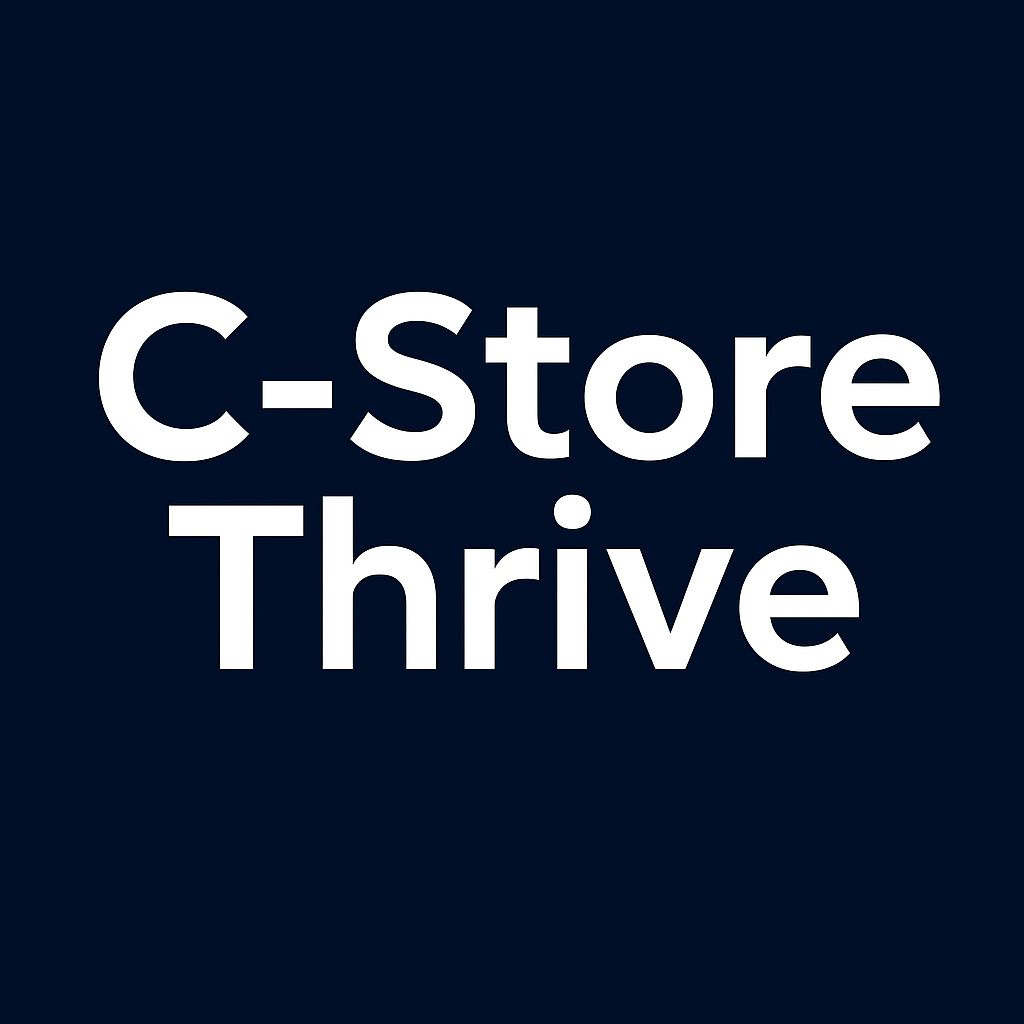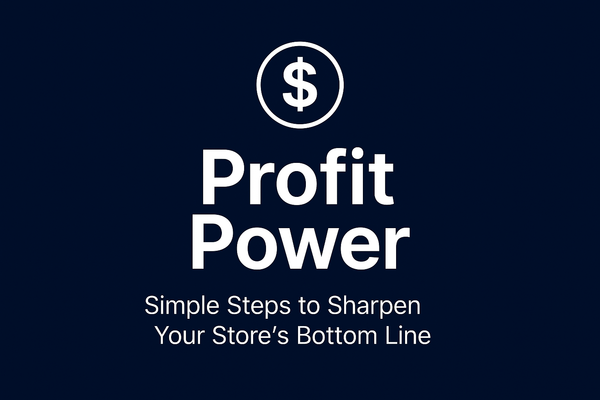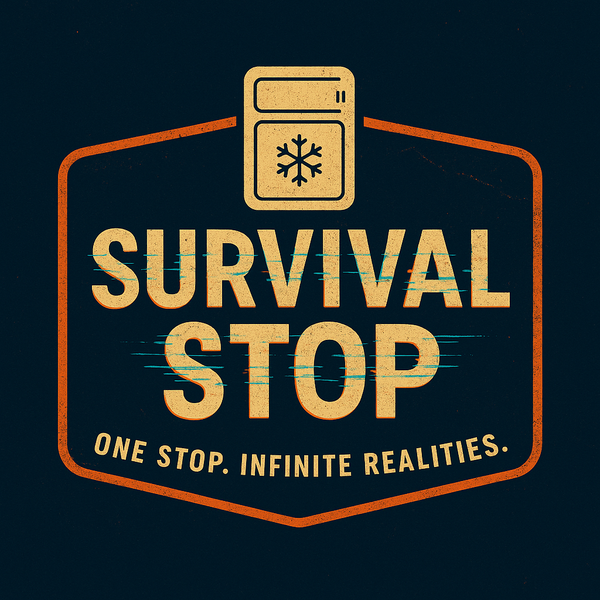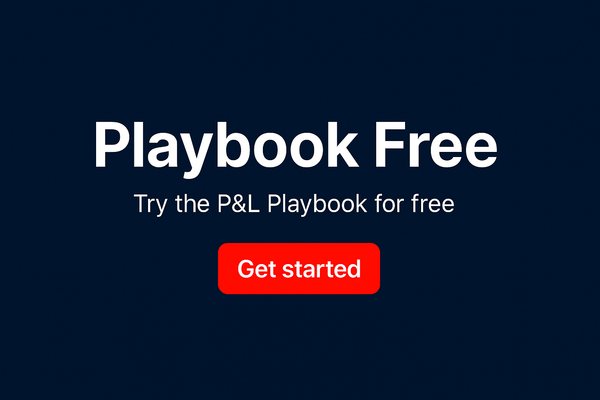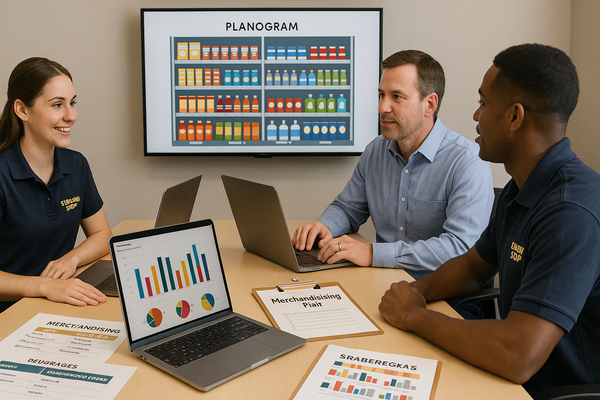Upselling Techniques That Work for C-Store Associates: Building Sales Skills That Drive Results
Effective upselling can increase C-store transaction values by 20-30%, with trained associates reporting 15-25% higher profitability. The key is training frontline staff in customer-focused techniques that feel helpful rather than pushy, using complementary pairing and situational awareness.
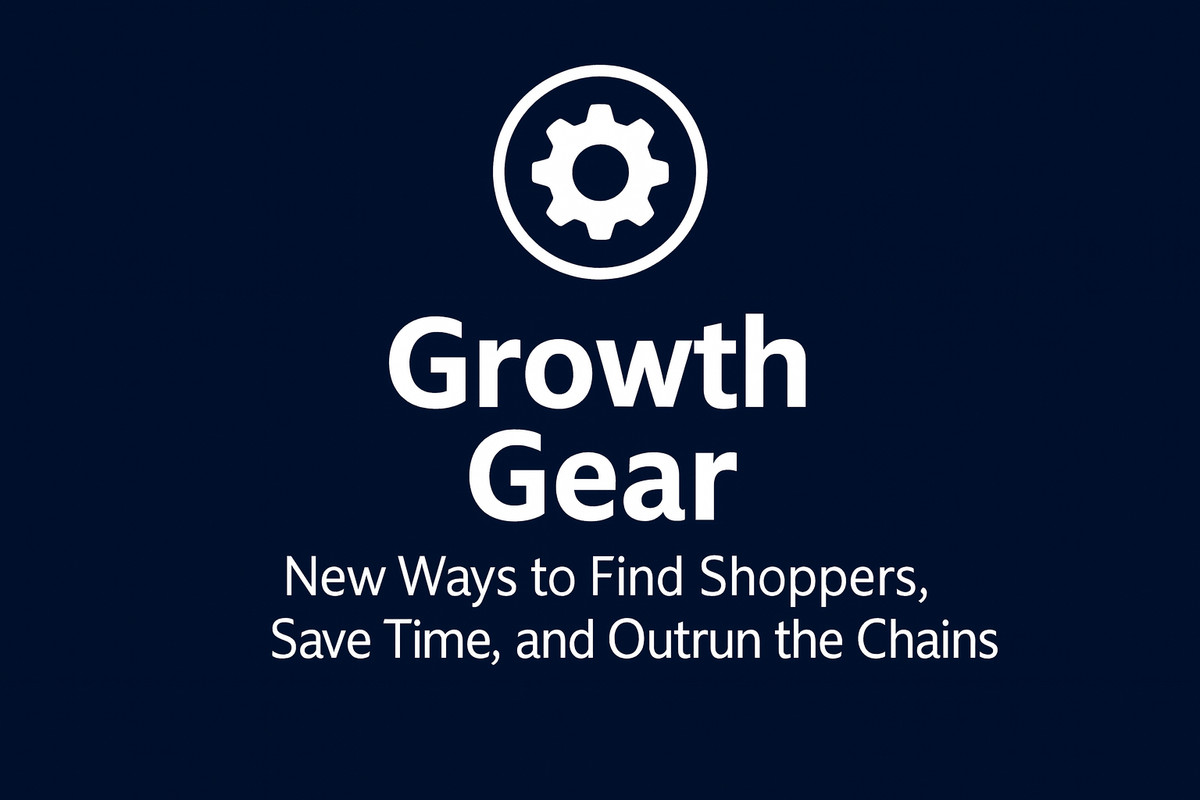
For independent convenience store owners, the difference between a $8 average transaction and a $12 average transaction often comes down to one critical factor: whether your associates know how to effectively suggest additional items that customers actually want. Yet most C-store employees receive little to no training in upselling techniques, leaving thousands of dollars in potential revenue on the table every month.
Research from the National Association of Convenience Stores shows that effective upselling can increase average transaction values by 20-30%, while stores with trained associates report 15-25% higher profitability compared to locations relying solely on passive sales. More importantly, customers appreciate well-executed upselling—85% of shoppers report positive experiences when associates make relevant, helpful suggestions that enhance their original purchase.
The challenge for independent operators lies not in understanding the value of upselling, but in training frontline associates to execute techniques that feel natural and customer-focused rather than pushy or scripted. Unlike chain stores with corporate training programs, independent owners must develop practical, actionable approaches that work within their unique operational constraints while building genuine customer relationships that drive long-term loyalty.
Understanding the C-Store Upselling Opportunity
The Convenience Store Customer Mindset
Convenience store customers present unique upselling opportunities because they're often in solution-seeking mode—they've identified a need and are already committed to making a purchase. Whether stopping for morning coffee, grabbing lunch, or handling an emergency situation, these customers are typically open to suggestions that enhance their experience or solve additional problems they may not have considered.
The psychological principle of "purchase momentum" works particularly well in convenience stores: once customers have decided to spend money, they're statistically more likely to accept relevant additional purchases, especially when those items are positioned as complementary or beneficial to their primary need.
Transaction Patterns and Timing Opportunities
Peak upselling opportunities in convenience stores occur during predictable customer situations:
Morning Rush (6-9 AM): Coffee purchasers represent prime opportunities for breakfast pastries, energy bars, newspapers, or loyalty program enrollment
Lunch Period (11 AM-2 PM): Hot food customers often need beverages, chips, desserts, or condiment packets
After School/Work (3-6 PM): Snack buyers frequently want beverages, while fuel customers may need automotive supplies or convenience items
Evening Hours (6-10 PM): Dinner solutions, family treat purchases, and next-day preparation items create multiple upselling touchpoints
The key insight for associates: different customer missions create different upselling opportunities, and successful techniques adapt to these varying needs rather than applying generic scripts**.
The Psychology of Effective Upselling
Building Trust Through Value-First Approach
The most successful C-store upselling techniques focus on genuine customer benefit rather than transaction size increase. When associates demonstrate understanding of customer needs and suggest items that truly enhance the shopping experience, customers perceive the interaction as helpful service rather than sales pressure.
Trust-building behaviors that enable successful upselling:
- Active listening to understand customer's actual needs and time constraints
- Product knowledge enabling specific, relevant recommendations
- Genuine enthusiasm for products the associate personally recommends
- Respect for budget signals and customer decision-making autonomy
The "After Yes" Moment
The most effective upselling occurs immediately after customers commit to their primary purchase—what sales professionals call the "after yes" moment. At this point, customers have already decided to spend money and are psychologically more receptive to additional suggestions, especially when positioned as complementary to their main purchase.
Strategic timing for maximum effectiveness:
- Immediately after item selection but before payment processing
- During payment processing when customer attention is focused on the transaction
- After payment completion for items that can be quickly added (beverages, candy, small convenience items)
Seven Proven Upselling Techniques for C-Store Associates
Technique 1: Complementary Product Pairing
Strategy: Suggest items that naturally complement the customer's primary purchase, enhancing their overall experience or solving related needs.
How It Works: When customers select one item, associates immediately think of related products that would improve their experience. The key is making logical connections that customers can easily understand and appreciate.
Practical Applications:
text
Coffee Purchase → "Would you like a fresh pastry with that coffee? Our blueberry muffins just came out of the oven."
Hot Dog → "Can I grab you a bag of chips and a drink to go with that? We have a combo deal today."
Energy Drink → "Are you heading to work? We've got protein bars that pair really well with that energy drink."
Phone Charger → "Since you're getting a charger, would you like a car adapter too? Most people need both."
Why It Works: Customers appreciate suggestions that make logical sense and add genuine value. When associates demonstrate understanding of how products work together, customers feel helped rather than sold to.
Training Approach: Help associates learn natural product relationships through hands-on experience. Have them use products together so they can speak authentically about combinations that actually work.
Technique 2: Seasonal and Situational Awareness
Strategy: Make suggestions based on weather, time of day, local events, or seasonal needs that customers might not have considered but would appreciate.
How It Works: Associates observe environmental and situational factors that create additional customer needs, then proactively address those needs with relevant product suggestions.
Practical Applications:
text
Rainy Day + Coffee → "It's getting cold out there—would you like some hand warmers for later?"
Summer Heat + Snacks → "Hot day like this, you might want to grab an extra bottle of water."
Friday Afternoon + Energy Drink → "Long weekend ahead? We've got travel-size snacks perfect for road trips."
School Holiday + Family Visit → "Kids are out today—want to grab some treats for them while you're here?"
Why It Works: Customers appreciate associates who notice their broader context and situation. These suggestions feel helpful and thoughtful rather than sales-driven.
Training Focus: Develop associates' observational skills and weather/community awareness. Encourage them to think about customer situations beyond just the immediate purchase.
Technique 3: Upgrade and Premium Options
Strategy: Offer higher-quality or larger-size versions of selected items when the upgrade provides clear additional value.
How It Works: When customers select basic versions of products, associates suggest premium alternatives that offer better value, longer satisfaction, or enhanced experience for a modest price increase.
Practical Applications:
text
Small Coffee → "For just 50 cents more, you can get our large size—it's basically two cups for the price of one and a half."
Regular Snack → "Have you tried the premium version? It's made locally and customers say it tastes much better."
Basic Phone Charger → "The rapid-charging version is only $3 more and charges three times faster."
Single Item → "We have a family size that's actually cheaper per serving if you'll use it within the week."
Why It Works: Customers appreciate getting better value for slightly more money, especially when the associate clearly explains the additional benefits.
Training Emphasis: Associates need to understand the genuine advantages of premium options so they can authentically communicate value rather than just pushing higher prices.
Technique 4: Convenience and Time-Saving Solutions
Strategy: Identify ways customers can save future trips or solve multiple needs with one stop, emphasizing the convenience value proposition.
How It Works: Associates recognize when customers might benefit from handling multiple needs simultaneously, then suggest items that save time, trips, or future inconvenience.
Practical Applications:
text
Morning Coffee → "While you're here, want to grab lunch for later? Our sandwiches stay fresh all day."
Fuel Purchase → "Need anything from inside? Save yourself another stop later."
Single Beverage → "Getting just one? Our 12-pack is on sale and saves you from running out this week."
Basic Supplies → "Since you need batteries, want to grab some extras? They don't expire and you'll need them eventually."
Why It Works: Busy customers highly value suggestions that save them time and future trips. This positions the store as a solution provider rather than just a transaction point.
Training Development: Help associates understand customer time constraints and think ahead to what customers might need later.
Technique 5: Limited-Time and Exclusive Offers
Strategy: Create urgency and exclusivity around relevant products that enhance the customer's purchase experience.
How It Works: Associates mention special deals, limited-time offers, or exclusive items that are genuinely relevant to the customer's current purchase, creating both value and urgency.
Practical Applications:
text
Any Purchase → "Just so you know, we're doing buy-one-get-one on energy drinks today only."
Regular Customer → "You're one of our regulars—want to try our new premium coffee before we officially launch it?"
Snack Purchase → "These chips are half-price today because we're making room for new flavors."
Multiple Items → "Since you're getting both of those, you qualify for our combo discount."
Why It Works: Customers feel valued when offered special deals and exclusive opportunities. The time sensitivity encourages immediate action.
Implementation Notes: Offers must be genuine and relevant. Associates should only mention deals that truly apply to the customer's situation.
Technique 6: Problem Prevention and Preparation
Strategy: Anticipate customer problems or future needs based on their current purchase, then suggest preventive solutions.
How It Works: Associates think ahead about what challenges customers might face with their purchases, then proactively suggest items that prevent problems or enhance satisfaction.
Practical Applications:
text
Ice Purchase → "Getting ice? You might want napkins and cups too—most people forget them."
Road Trip Snacks → "Long drive ahead? Want some caffeine pills or energy drinks for later?"
Hot Food → "That's pretty spicy—want to grab a drink just in case?"
Electronics → "These batteries are included, but you might want backups since electronics always run out at the worst times."
Why It Works: Customers appreciate associates who help them avoid future problems and frustrations. This builds trust and positions associates as helpful advisors.
Training Focus: Develop associates' ability to think through customer experiences and anticipate potential issues.
Technique 7: Loyalty and Relationship Building
Strategy: Use upselling opportunities to strengthen customer relationships and encourage repeat visits through personalized suggestions and loyalty program benefits.
How It Works: Associates recognize regular customers and make personalized suggestions based on past purchases, preferences, or loyalty program benefits.
Practical Applications:
text
Regular Customer → "I noticed you usually get the medium coffee—want to try our new dark roast today?"
Loyalty Member → "Your points are adding up—you're close to earning a free drink. Want to add something to get there today?"
Repeat Visitor → "You've been getting those protein bars—we just got a new flavor I think you'd like."
New Customer → "Since this is your first visit, want to sign up for our rewards program? You'll save on today's purchase."
Why It Works: Personalized suggestions based on relationship history feel caring rather than sales-driven. Customers appreciate being recognized and valued.
System Requirements: Associates need access to loyalty program information and the freedom to remember and act on customer preferences.
Implementation Strategy: Building Associate Confidence
Phase 1: Foundation Training (Week 1-2)
Product Knowledge Development
Before associates can effectively upsell, they must genuinely understand and appreciate the products they're suggesting. This goes beyond knowing what's in stock to understanding how products work together and why customers would value specific combinations.
Hands-On Learning Approach:
text
Personal Experience Requirement:
- Associates try different product combinations themselves
- Staff meetings include tasting sessions for food items
- Team members experience seasonal products and promotional items
- Associates use products at home to understand customer experience
Product Relationship Mapping:
- Create visual guides showing natural product pairings
- Document seasonal combinations that work well together
- Identify high-margin items that provide genuine customer value
- Track successful combinations other associates have discovered
Customer Psychology Education
Training associates to recognize customer buying signals, mood indicators, and situational factors that affect upselling success:
text
Customer Reading Skills:
- Identifying rushed customers who want quick suggestions
- Recognizing budget-conscious shoppers who value deals
- Understanding regular customers open to trying new products
- Spotting customers in problem-solving mode who appreciate helpful suggestions
Situational Awareness Development:
- Weather-related needs and opportunities
- Time-of-day patterns and customer missions
- Local events creating specific product needs
- Community patterns that affect shopping behavior
Phase 2: Technique Practice and Role-Playing (Week 3-4)
Scenario-Based Training
Rather than memorizing scripts, associates practice adapting techniques to realistic customer situations they'll actually encounter:
text
Practice Scenarios:
- Morning coffee customer running late for work
- Parent with children looking for quick lunch solutions
- Fuel customer who mentions upcoming road trip
- Regular customer trying to stay within budget
- New customer unfamiliar with store offerings
- Emergency shopper needing specific problem solved
Role-Playing Sessions:
- Associates take turns being customers and sales staff
- Practice handling rejections gracefully and professionally
- Develop natural conversation flow rather than scripted responses
- Learn to read body language and adjust approach accordingly
Confidence Building Through Success Stories
Associates learn better when they see concrete examples of successful upselling from their own store environment:
text
Success Documentation:
- Share specific examples of successful upsells from your store
- Explain why certain combinations worked well for customers
- Celebrate associates who make helpful suggestions appreciated by customers
- Document customer feedback about positive upselling experiences
Peer Learning:
- Experienced associates mentor newcomers
- Team meetings include sharing successful upselling stories
- Create friendly competition around helpful customer service
- Recognize associates who build strong customer relationships
Phase 3: Real-World Application and Coaching (Month 2-3)
On-the-Floor Support
Managers and experienced associates provide real-time coaching during actual customer interactions:
text
Coaching Approach:
- Shadow new associates during busy periods to provide immediate feedback
- Discuss missed opportunities after customers leave (not during service)
- Celebrate successful upsells immediately to reinforce positive behavior
- Provide gentle correction when approaches need adjustment
Performance Development:
- Track individual progress without creating pressure
- Identify each associate's natural strengths and upselling style
- Customize training to individual personality and customer interaction style
- Build confidence through gradual skill development
Systematic Improvement
Ongoing development ensures upselling becomes natural part of excellent customer service:
text
Continuous Learning:
- Weekly team discussions about new product combinations discovered
- Monthly review of successful techniques and customer feedback
- Seasonal training updates for new promotional opportunities
- Regular practice sessions to maintain and improve skills
Performance Recognition:
- Reward associates based on customer satisfaction rather than just sales numbers
- Celebrate helpful customer service that builds loyalty
- Share customer compliments about associate helpfulness
- Create career advancement opportunities for associates who excel at customer relationships
Overcoming Common Challenges
Challenge 1: Associates Fear Being "Pushy"
Root Cause: Many associates worry that suggesting additional items will annoy customers or seem greedy, leading to reluctance to make any suggestions.
Solution Strategy: Reframe upselling as helpful customer service rather than aggressive sales tactics. Focus training on genuine customer benefit and problem-solving.
Implementation Approach:
- Emphasize that good upselling helps customers discover things they actually need
- Train associates to listen first, then suggest based on what they learn
- Share customer testimonials about appreciated suggestions
- Practice techniques that feel conversational and helpful rather than sales-oriented
Success Indicators: Associates begin making suggestions naturally and customers respond positively to their helpfulness.
Challenge 2: Limited Product Knowledge Restricting Confidence
Root Cause: Associates can't confidently suggest products they don't understand or haven't experienced personally.
Solution Strategy: Invest in comprehensive product education that goes beyond basic features to understanding customer benefits and use cases.
Implementation Approach:
- Provide samples so associates can personally try products they're suggesting
- Create product combination guides showing what works well together
- Encourage questions and experimentation during slower periods
- Share information about customer feedback on different products
Success Indicators: Associates speak confidently about products and make relevant suggestions based on solid knowledge.
Challenge 3: Inconsistent Application Across Shifts
Root Cause: Different associates have varying comfort levels and skills with upselling techniques, creating inconsistent customer experiences.
Solution Strategy: Develop store-wide standards and systems that support all associates regardless of experience level.
Implementation Approach:
- Create simple reference guides for common upselling opportunities
- Establish coaching systems where experienced associates mentor newcomers
- Hold regular team meetings to share successful techniques
- Develop prompts and reminders that help associates remember to make suggestions
Success Indicators: Customer experience remains consistently helpful across all shifts and associates.
Challenge 4: Customer Resistance and Rejection Handling
Root Cause: Associates become discouraged when customers decline suggestions and may stop trying altogether.
Solution Strategy: Train associates that rejection is normal and doesn't reflect on their abilities or the customer's satisfaction.
Implementation Approach:
- Teach graceful ways to accept "no" that maintain positive relationships
- Emphasize that suggesting is always worthwhile even if declined
- Share statistics showing that customers appreciate being offered options
- Focus on relationship building rather than individual transaction success
Success Indicators: Associates continue making helpful suggestions even after experiencing rejections.
Technology and Systems Support
Point-of-Sale Integration
Modern POS systems can prompt associates with relevant upselling suggestions based on purchase patterns and customer data:
Automated Prompting Features:
- Screen alerts showing complementary products when specific items are scanned
- Customer loyalty program integration highlighting available rewards or promotions
- Seasonal suggestion rotation based on weather and calendar events
- Inventory management alerts for items you want to move quickly
Implementation Considerations:
- Prompts should enhance rather than replace associate judgment
- Technology must be fast enough not to slow down transactions
- Associates need training on when to follow prompts versus making personal suggestions
- System should learn from successful combinations and customer preferences
Performance Tracking and Motivation
Data-driven approaches help identify successful techniques and motivate continued improvement:
Useful Metrics:
- Average transaction value trends by associate and shift
- Customer satisfaction scores related to helpfulness and service
- Successful upselling combinations and their frequency
- Customer loyalty program participation and engagement rates
Motivation Systems:
- Recognition programs celebrating customer service excellence
- Team goals focused on customer satisfaction rather than just sales numbers
- Sharing success stories and positive customer feedback
- Career development opportunities for associates who excel at customer relationships
Measuring Success and ROI
Quantitative Performance Indicators
Track metrics that demonstrate both business impact and customer satisfaction:
Financial Impact Measurement:
- Average transaction value increase over time
- Profit margin improvement from higher-margin upsold items
- Customer visit frequency and loyalty program engagement
- Reduced price shopping as customers value service over lowest cost
Customer Experience Metrics:
- Customer satisfaction scores specifically related to helpfulness
- Repeat visit frequency and customer retention rates
- Customer referrals and word-of-mouth recommendations
- Online review mentions of helpful staff and service
Qualitative Assessment Methods
Beyond numbers, evaluate the quality and sustainability of upselling efforts:
Customer Feedback Collection:
- Direct feedback about associate helpfulness and suggestions
- Observation of customer body language and response to upselling attempts
- Community reputation and word-of-mouth feedback
- Competitive differentiation based on superior customer service
Associate Development Assessment:
- Individual comfort level and confidence with upselling techniques
- Natural integration of suggestions into customer service approach
- Peer mentoring and knowledge sharing among team members
- Career satisfaction and retention among associates who excel at customer relationships
Advanced Strategies for Mature Programs
Personalization and Customer Relationship Management
As associates become more skilled, they can develop sophisticated approaches based on individual customer relationships:
Advanced Techniques:
- Remembering individual customer preferences and purchase patterns
- Anticipating seasonal needs based on customer lifestyle and habits
- Building trust that enables larger suggestions and loyalty program engagement
- Creating personalized experiences that differentiate from chain competitors
Community Integration and Local Partnerships
Experienced associates can leverage community connections to enhance upselling effectiveness:
Community-Based Approaches:
- Suggesting products related to local events and activities
- Partnering with local businesses for cross-promotional opportunities
- Understanding neighborhood patterns and demographic preferences
- Building store reputation as community-focused business that genuinely cares about customers
Conclusion: Sustainable Upselling Success
Effective upselling in convenience stores succeeds when associates genuinely focus on customer benefit rather than transaction size. The most successful programs train associates to listen carefully, suggest thoughtfully, and build relationships that encourage customers to return regularly and recommend the store to others.
The seven proven techniques—complementary pairing, situational awareness, premium upgrades, convenience solutions, limited offers, problem prevention, and relationship building—work because they address real customer needs and enhance shopping experiences. When associates master these approaches, upselling becomes a natural extension of excellent customer service rather than an awkward sales add-on.
Implementation success requires systematic training that builds product knowledge, develops customer interaction skills, and creates supportive systems enabling consistent application across all shifts. The most effective programs focus on associate confidence and customer satisfaction rather than aggressive sales targets that can damage relationships.
For independent convenience store owners, investing in associate upselling skills creates multiple competitive advantages: higher transaction values, improved customer satisfaction, enhanced community reputation, and associate job satisfaction that reduces turnover costs. These benefits compound over time as skilled associates develop regular customer relationships that drive long-term business success.
Start with foundation training that emphasizes customer benefit and genuine helpfulness, then build skills systematically through practice, coaching, and continuous improvement. Remember that the best upselling feels like excellent customer service—because that's exactly what it is when done correctly.
Ready to transform your associates into customer service heroes who naturally drive sales growth? Begin by training them to see upselling as problem-solving and relationship-building, then support their development with systems, recognition, and ongoing coaching that celebrates helpful customer interactions over aggressive sales tactics.
